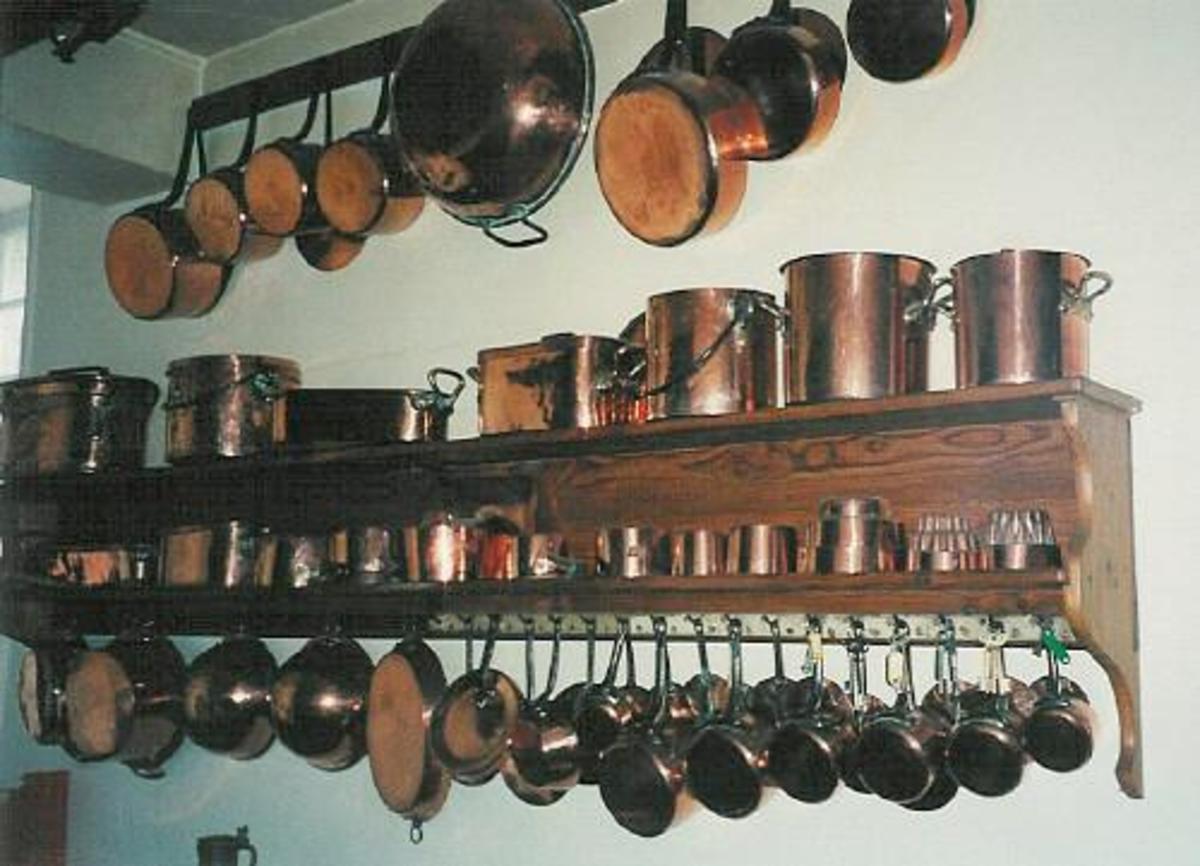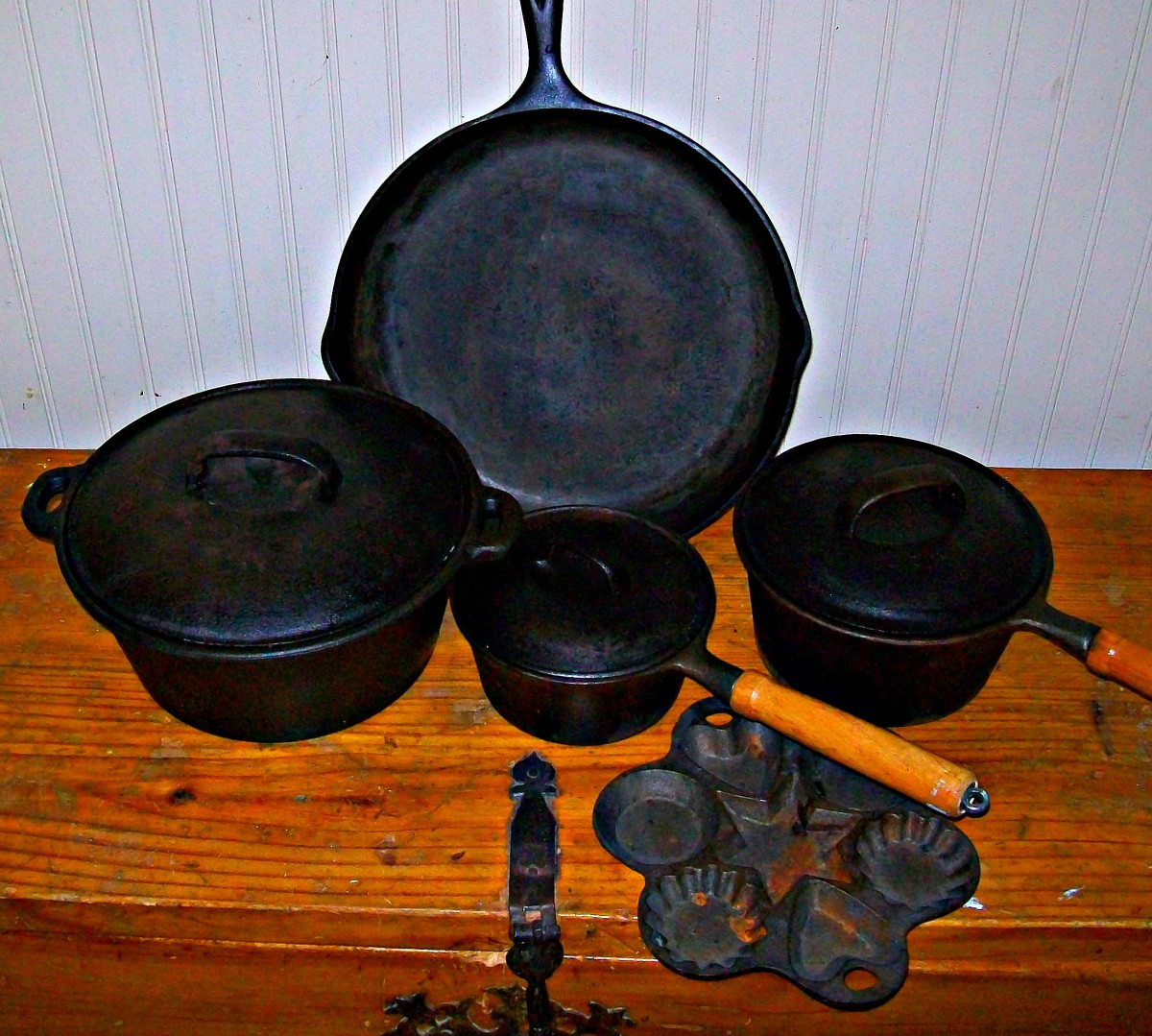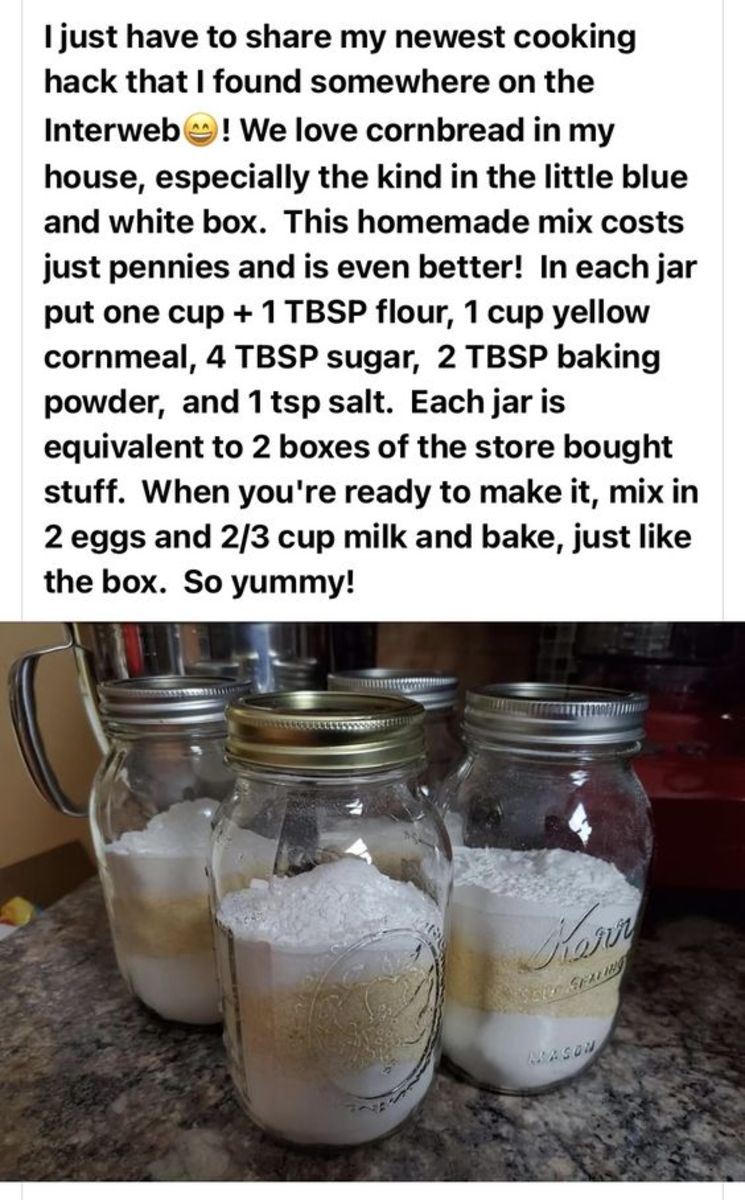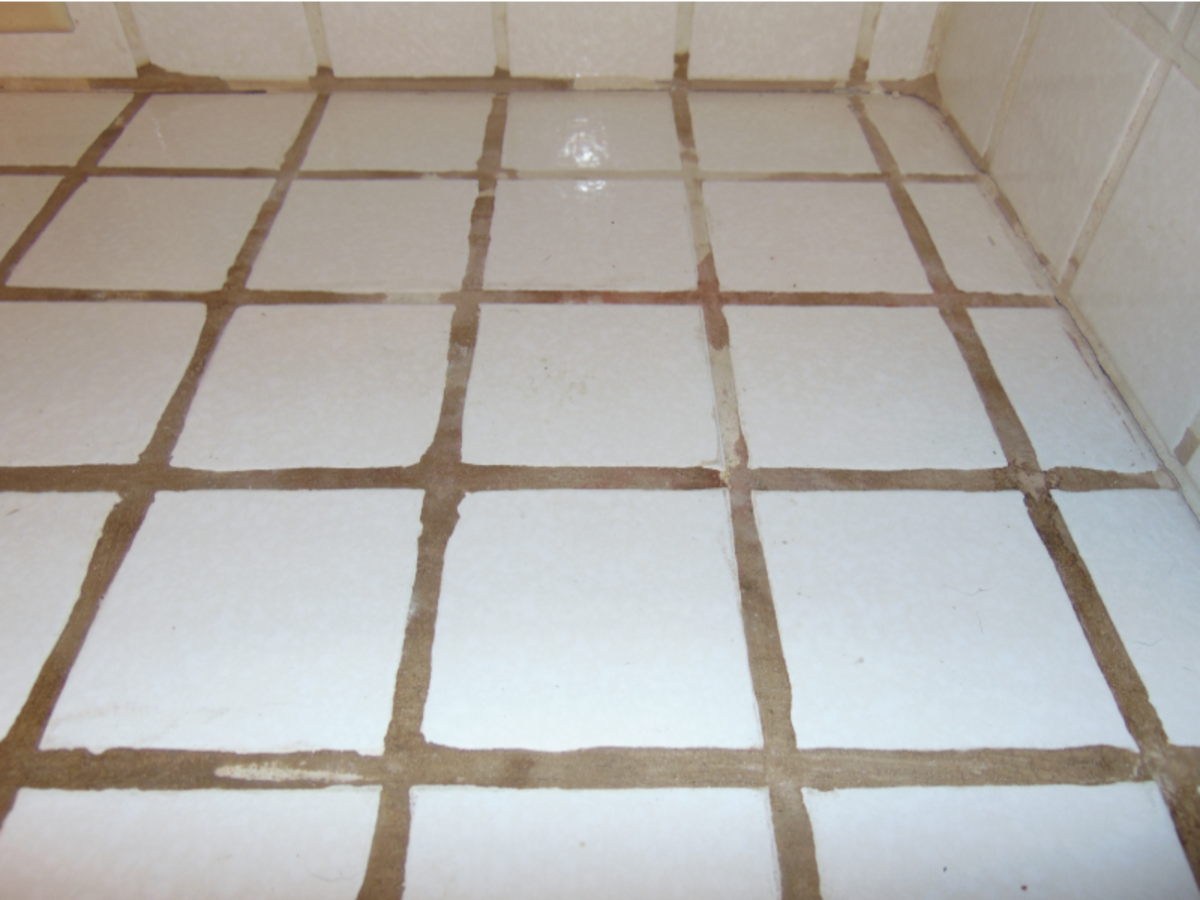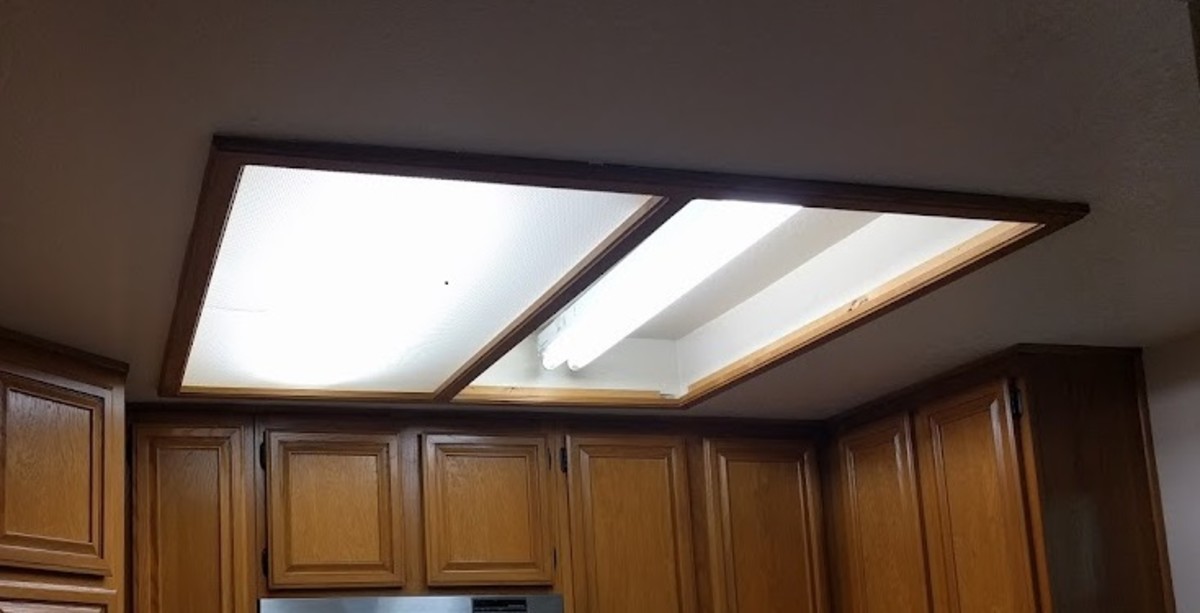Equipping Your Basic Kitchen
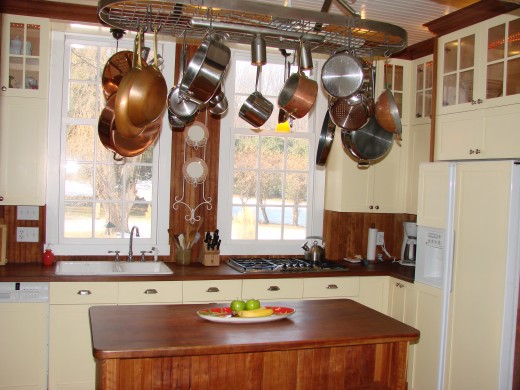
Kitchen Essentials on a Budget
Kitchen equipment and gadgets are fun. A well appointed, well equipped kitchen is something that many of us would like to have. But the realities of circumstance, space and money often dictate otherwise.
We have a kitchen that some would envy. We designed it and there’s good storage space, nice quality pots and pans, good cutlery, good appliances, and gadgets of all kinds. We cook a lot, entertain sizeable groups, and prepare a lot of different kinds of dishes. But the reality is that we repeatedly use a few things and seldom use most of it.
So if we set aside the “look pretty” part of the equation, what are the items that are really worth their price and really get well used?
We’ve had the pleasure or displeasure over the years to have about twenty different kitchens. Two items that really stand out as important to me are a gas range and a decent work space. Of course you might not have a choice of stoves but if you do, without question go with gas. Electric ranges take too long to get hot, too long to cool off, are hard to control, and hard to keep clean. The newer flat glass surfaces may look easy to clean but things that are cooking often spill or boil over and once they hit a hot surface like that they can be nearly impossible to clean off. The surface of a gas range doesn’t get nearly as hot. If you turn off a gas burner you can safely walk away without worrying about something burning or getting over done. If you need to remove something from the heat on an electric range your only choice is to physically move the pot. Most kitchens don’t have the space or surfaces to be putting hot pans hither and yon.
Beyond a major kitchen redo or a new home, there isn’t much point in fretting over any other appliances. They’ll do all right.
As to work surfaces, we once had a fairly small kitchen without a lot of counter space. The addition of a 2 foot square butcher block on legs and two stools made a world of difference in that kitchen. The little block gave us the work space we needed and for just the two of us it was big enough to sit and eat a small simple meal. That’s an inexpensive addition that you might consider. If you have more room, there are some nice rolling island/storage things. They can get expensive but Ikea for example has some nice ones that aren’t too much. And you might find one used at a garage sale or on Craigslist.
If you’re planning a major kitchen remodeling or building project I’d be happy to pass along what we’ve learned.
So on to implements. It’s easy to spend a small fortune, or a large one, on fancy pots and pans and cutlery. There is a difference in quality and utility from cheap to expensive up to a point. Beyond that point, wherever it is, cost becomes a matter of cache and aesthetics, not utility. We all have to operate within our available budget, so where should you spend your money and what items are worth paying more for? Storage space can also be limited so what items are most valuable and have the broadest utility?
Before I go on, let me say that my opinions are based on over fifty years of cooking experience in all kinds of settings and for many sizes of groups so I’d say they are well-founded opinions, but they are opinions and you certainly may find people with valid perspectives and experience whose choices would be different than mine. A lot of things just come down to preference.
One or two good quality knives and three good pots are my version of kitchen essentials.
A nice big pot, called a stock pot and or pasta pot is essential and luckily, they’re not too expensive. A stainless steel one that comes with a lid and with both a pasta insert and a vegetable steamer insert is your target. This thing will serve as your pasta pot, your steamer, your soup pot, your stew pot, your chili pot…you get the idea.
The second item is a nice size sauté pan which basically looks like a skillet except that it has vertical sides rather than sloped. But it works fine as a skillet too if you don’t have the budget or space for both. It should have a lid. A 3 quart (a quart and a liter are close to the same) size is good. The sloped sides on a skillet make it easier to get an angle with a spatula to flip a burger or pancake or whatever. The straight sides on a sauté pan make it better for longer cooking episodes with a fair amount of liquid. Either can double as the other. A sauté pan will have a lid, a skillet may not. If you have or find a good skillet it will serve this purpose but you’ll want to find a lid for it if you don’t have one. Lids can be bought separately at some stores such as Bed Bath & Beyond. It might not fit exactly but that’s not too important. If the lid isn’t an exact fit it should be larger than the skillet.
The third item is a basic sauce pan. A stainless steel 2 quart or 1 ½ quart with a lid is good. This is the basic pot. It might be shorter or taller. It will likely have a long handle on one side and might have a short handle on the other side. If you find a good deal on one that has just short handles on both sides, go for it. That’ll work fine. Usually the two handles ones will be larger, like 3 quarts. No problem with that. Just remember that stove real estate will be come an issue when you’ve got a lot going on at once.
So this jerk keeps saying “a good one.” What is a good one versus a bad one? A good cooking pot needs to be fairly heavy. That is to say the metal needs to be thick. This distributes the heat more evenly and keeps it from having hot spots on the bottom which will burn food. It should be easy to clean. Most handles these days are designed not to get too hot but that’s not a big deal. A potholder will solve that problem. The handles should be firmly attached with rivets. Pots will be made of some combination of stainless steel, copper, aluminum, cast or anodized aluminum, and cast iron. As with electricity, the heavier a metal is, the better it conducts energy. The molecules are closer together which is why it’s heavy. Copper is heavy. Aluminum is not. Copper cookware with stainless steel insides are the cat’s meow. But they’re very pricey and it’s a chore to keep the copper exterior shiny and clean. High-end cookware manufacturers such as All-Clad make stainless steel cookware with a copper core. This provides for good looks, low maintenance, and excellent cooking properties. It also provides for a very high price. A single item might cost $300.00.
Here’s what I suggest. Go to a high end store like Williams-Sonoma and handle the expensive stuff. Pay attention to the thickness of the metal, the overall weight, look closely at how the handles are attached. Then as you come across less expensive items you’ll have a basis for comparison. Be aware of brand names. All-Clad for example, a very fine brand in general, has several “layers” of quality. The low-end All-Clad is not the same as the high-end All-Clad but it’s still good. The famous chef Emeril has his own line of cookware made by All-Clad. It’s a middle priced option and not of the same quality as the better All-Clad, but not bad. Cuisinart, a well known brand in kitchen electronics has a line of cookware that is low to mid priced and decent. You will find it at Bed Bath & Beyond. I’ll provide some specific item recommendations later on along with where to find them.
My opinion is to stay away from non-stick, particularly in lower priced products. It doesn’t work well, it isn’t as non-stick as they’d like you to believe, it peels and scratches off, and there are some reports of health related problems with the materials used for the non-stick surfaces. Over time the non-stick surface will scratch and begin to come off. You have to use special plastic utensils to keep from scratching it. It just isn’t worth it. We have two high-end All-Clad non-stick pans in our collection. One is a large rectangular griddle covering two burners on the stove for pancakes and such. The other is a big round shallow griddle with a wavy bottom, specifically designed for grilling meats. These are both expensive and very non-essential in a kitchen. You may hear differing opinions on this non-stick issue. What you will find with a good stainless steel pot or pan is that it cleans quite easily without a non-stick interior and that it works better and is easier to maintain.
An interesting option is good old fashioned cast iron. Your grandmother probably had one and it might still be around somewhere. You’ll recognize it. It’s black and really heavy. They’re indestructible. They weigh a ton, are on the ugly side, and are kind of hard to keep clean but they work very well and if you find new ones they’re not expensive. I have a huge one that we still use for camping. You might also find a large cast iron pot that would work well for stew, soups, and the such. It’s called a Dutch Oven. You can still buy cast iron new from a company called Lodge and for $100 you can get a big skillet, a smaller skillet, a big Dutch Oven and a 2 quart pot, with lids. That’s a good deal. You can find that online.
Then there’s cutlery to consider. A couple of good knives are important. There are two basic knives that will carry you a long way. The first is a French Chef’s Knife or just Chef’s Knife. It’s that big one with the wide blade. This is the workhorse of the kitchen. It’s what you will use to chop onions and garlic and other vegetables and herbs. It’s great for cutting through something thick like a block of cheese. It’s good for cutting through a thick cut of meat. It’s does what someone might do with a food processor without the clean up mess and a zillion attachments. They come in various lengths from 6” (15 cm) to 10” (25cm) or even 12” (30 cm). An 8” length (20 cm) is most common and will work fine. Find one that is not stainless steel. Cutlery manufacturers have come up with carbon steels that resist staining because they presume that consumers want to see shiny. Personally I don’t care if it’s shiny or not. Anyway be clear on the difference between a stain resistant or stain free carbon steel and stainless steel. Cheap knives will be made of stainless steel. It doesn’t hold an edge or sharpen well. You don’t want stainless steel. You should be able to find a decent carbon steel knife for about $30. More on shopping later. For the brand names, e.g. Wusthof, Henckels, etc., an 8” Chef’s Knife will run you $100. The other high utility kitchen weapon is a 5” (12.5 cm) or 6” (15cm) serrated edge utility knife. It might be called a sandwich knife or there’s a version with a two-pointed end that’s referred to as a “tomato knife.” This is your basic slicer, cutter. You’ll use it a lot. Other useful but not necessary knives are a long boning knife and an 8” (20cm) carver/slicer. The boning knife has a long thin blade which makes it good for doing what it’s name says it does. I make a lot of use of my 8” carver/slicer for general carving, slicing vegetables, etc. but the 5” serrated knife will work for this purpose as well.. As you shop you will see a fairly new style with hollow ground blades, also known as a Sankotu knife. That of course is a Japanese word. These knives feature a blade that looks like it has little indents along the edge but not on the edge like a serrated blade. These hollow ground blades are very good for slicing things very thin. You will see many sizes and lengths. They are fine as well for what you want.
The basic things to look for in a knife is a blade that continues all the way through the handle, good weight and balance, carbon steel, and preferably not a wooden handle. Wooden handle knives are fine functionally but they shouldn’t go into the dishwasher. The handles will dry out and crack from the water exposure.
Okay, so here’s your shopping guide:
Level one – Equipping My Kitchen On The Cheap.
Scrounge through your parents, older siblings, and grandparent’s cabinets, basements and garages. Things go out of style, they get replaced with newer things, and sometimes they just get stored away to save space. You might just find what you need without spending a penny. Maybe your recently married brother got duplicates for wedding gifts.
Next stop, the neighborhood garage and tag sales. Then try the Goodwill store. Make a stop at Marshall’s whenever you get the chance.
Don’t worry about this stuff all matching or anything. You can worry about that later after you learn from experience what your personal likes and dislikes are in cookware.
You may come across some cast aluminum items that were popular a some years back. They’re not bad.
What you would like most to avoid are thin metal and plastic handles. Let’s say you’ve just fried some pork chops in your skillet. The pork chops are out of the skillet now. You’ve heard that if you run cold water in the skillet right away it will be easier to clean. That’s true but if you run cold water in a thin-metal pot it will warp. Then it won’t sit flat on the burner anymore. Not good. Or maybe your sauce boils over and some spills on the burner and flashes up a little. Whoops, the plastic handles are all scorched now.
Level Two – Equipping My Kitchen With My Birthday Money.
Costco, Sam’s, Bed Bath & Beyond, and Homegoods will be your shopping destinations. The warehouse stores like Costco will have full sets of cookware and cutlery at reasonable prices, like maybe $120 for cookware and $60 for a full block of cutlery. These aren’t bad. Again, stay away from non-stick. My personal choice would be a nice selection of pots and pans in a set from Bed Bath & Beyond that they sell for $150.00 It has everything you’ll need including an 8 quart stock pot/pasta pot with three inserts and lids for everything. As to the knives, they carry a selection of single items that are decent and you will easily find an 8” Chef’s Knife and a serrated edge utility knife. The block sets at Costco or Sam’s will be decent as well.
Level Three – My rich uncle’s in town and wants to help me furnish my apartment.
So if your rich uncle offered to take you shopping for these kitchen essentials, here’s what you’d buy and what he’d spend.
Crate & Barrel would be a good place to shop along with Bed Bath & Beyond. Crate & Barrel has a range of price/quality options, more than say, Williams-Sonoma. Bed Bath & Beyond also has a range, starting somewhat lower than Crate & Barrel but including some higher priced items.
Here comes a little bit of good news. Sets are always much cheaper per item than what they call “open stock” which means buying each item separately. The bad news is you usually end up with items you won’t use much. But Crate & Barrel sells an All-Clad 5 piece stainless steel starter set for $300 that includes the 3 qt. sauté with a lid, a 3 qt. sauce pan with a lid (larger than you need but okay) and a 10” skillet. That’s a good buy. Any two of the items would cost the same. You’ll still need the $60 stock/pasta pot from Bed Bath & Beyond.
Then there’s the cutlery. On this one, the couple of items that you’ll use almost all the time won’t come up to the price of the sets and most of the knives in the set will just sit there.
You’re looking for Henckles or Wusthof 8” French Chef’s knife, $100.00. and a Henckles or Wusthof 5” serrated utility knife (might be called a sandwich knife and there’s a version called a “tomato knife with a double pointed end)$60.00. This one will do everything the big one doesn’t.
There are a couple of other knives that you might want to add later but these two will take you a long way. If rich uncle is prodding you to go for more opt for the 8”carver/slicer, a boning knife, and a sharpening steel.
The items won’t all match exactly but close enough and your uncle will be out $520.00. You will have great basic cooking items and could go a long time before you wanted anything else.
Oh, no rich uncle, huh? I was afraid of that.
Other odds and ends. These will all be less than $10 each, mostly $5.
Head to Target for the remainder of the list.
- Manual can opener
- Cutting board
- Swivel peeler (peels potatoes, apples, etc.
- Kitchen scissors
- Small funnel
- Stainless steel grater
- Steel Spatula,
- Long handled tongs
- 1 cup long handled ladle
- 1 cup glass measuring cup
- Set of measuring spoons
- Wooden spoons. They are cheap and indestructible unless you try to stir something in the blender while it’s running and they will be your mainstay for stirring stuff.
You’ll want some bowls. You should be able to find a set of about 10 glass bowls that all nest inside one anther for $30.
You’ll want a glass baking pan, about 9” X 11” (22cm X 28 cm), about $10.
Then there’s the question of kitchen electronics. Again, be mindful of cabinet and counter real estate. I would go for just three.
- Blender. It doesn’t have to have a zillion speeds or attachments. Just a basic blender. It’ll cost about $40.
- A toaster oven or toaster. The toaster oven is quite versatile but a 2 or 4 slice toaster is an alternative – $40
- A microwave oven – $65
You’re ready to cook. You don’t have anything to serve your creations but you’ll figure that out.
Don’t hesitate to drop me a note at tom@tom-linda.us if you have any questions.

